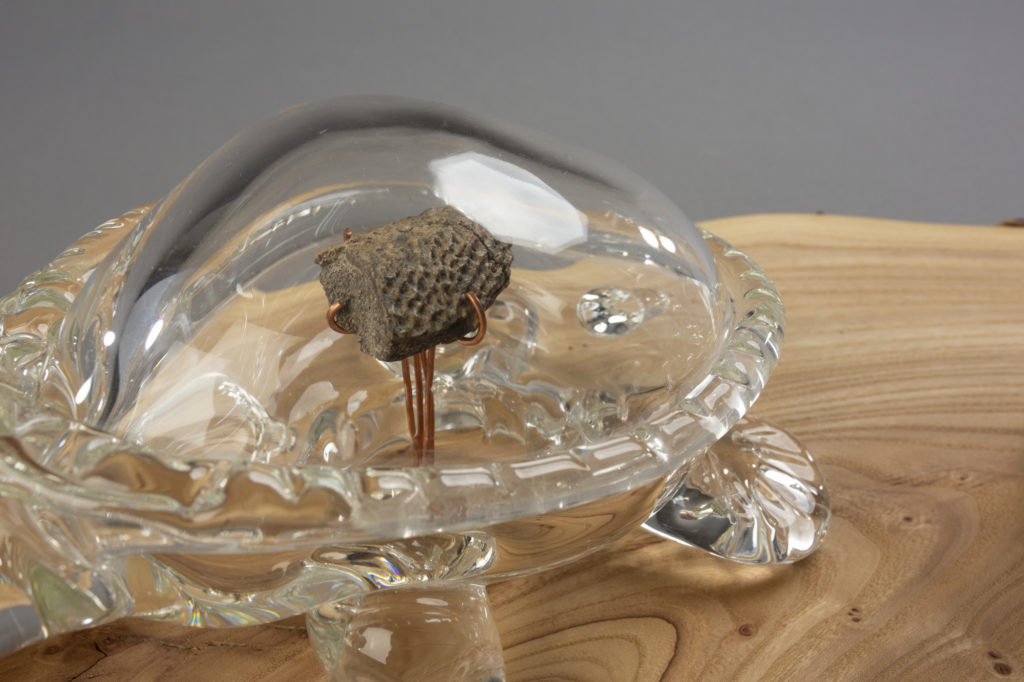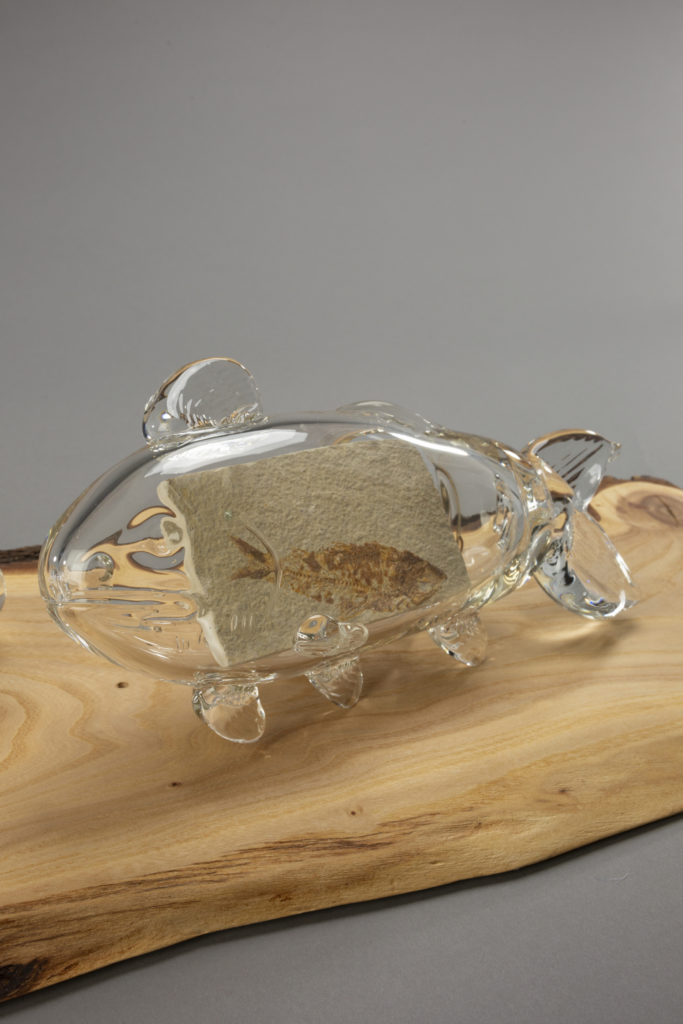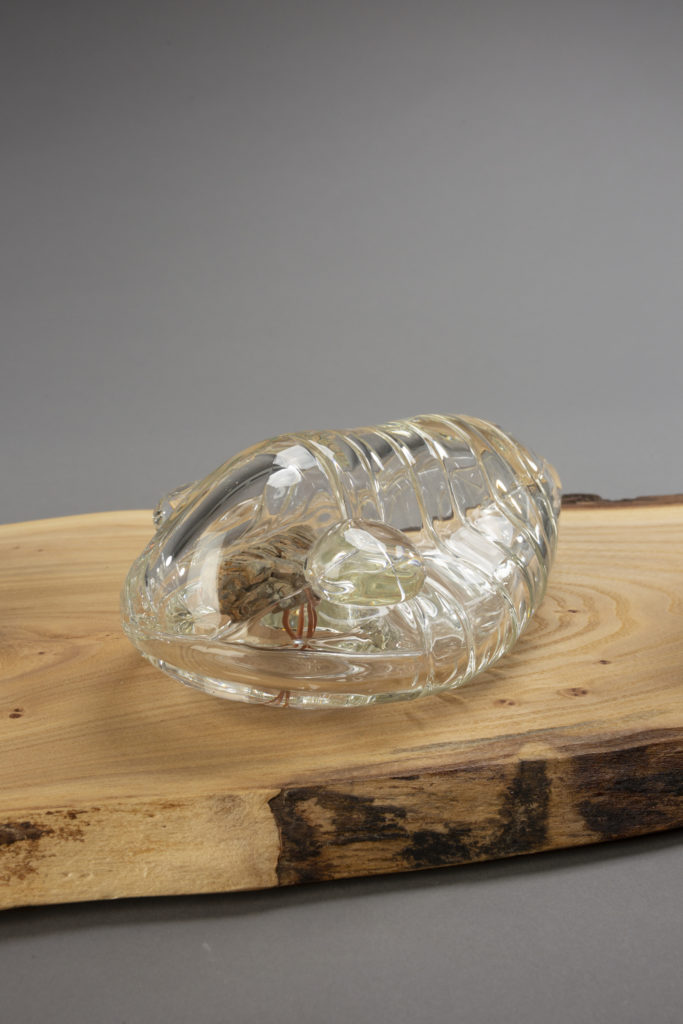
Glass, copper, wood, fossilized turtle shell, trilobite and fish. 2021.
Special photography credits to Elisha Lozares.

With this work, I am challenging traditional display methods, specifically within a museum environment. Frequently, specimens are seen behind glass, displayed with information and illustrations of their alive forms, using the glass as a protective material. While the importance of glass for preservation cannot be understated, regarding glass as a material for artistic manipulation can create an interactive experience that is functional, educative and beautiful.

Each of the three vessels are sculpted to take on the likeness of the fossilized creature they contain. Using clear glass in such a way not only acts as a protective barrier to preserve the fossil but generates a ghostly illusion of the prehistoric creature – the memory encompassing the remains. The method of construction, having the fossils prong set and inserted within a hole in the piece, allows for a protective barrier during display and an easy removal for cleaning, study and general maintenance – all crucial elements that must be taken into account when creating functional display.

The fossils chosen to be displayed in such a manner are organisms with which perfect preservation and visualization is not always possible in the same sense a dinosaur skeleton could be constructed. As such, the accessibility of the fossilized information is a lot more difficult for general audiences. With this in mind, the use of transparent glass allows for visualization of form and markings to the best of our knowledge, without superimposing hypothesized and artistic ‘gap filling’ that is often present within illustrations – soft tissue details (like color, texture, etc.) that aren’t yet known are not shown. Whilst the vessel shows the viewer the form with which this creature took, the ambiguity in soft tissue detail educates the viewer on our current limits of our scientific knowledge and what we have yet to know. Additionally, one of the most intriguing features of glass is its ability to magnify and distort – a feature that is not used to its full potential in traditional methods of display. Creating three dimensional forms, with varying planes and thicknesses of glass allows for a variety of lenses to be created. Through each of these lenses, a specimen can be magnified and viewed from different angles, revealing details that may otherwise be missed while viewing with the naked eye. As a result, the designs of the creatures are simplified in such a way that the fossils can best be observed through the glass without excessive distortion.

Additionally, using stylized glass representations of these creatures aids in creating an immersive and playful experience. The mode of information delivery is very accessible and allows for a level of engagement that can be enjoyed by audiences of all types. The display height and style creates an environment of learning that is more attractive than your standard museum display – giving more context to the fossil and creating a visually engaging and accessible scene.
This work was displayed as part of Mackenzie’s solo exhibition, Preservation at Framed on Fifth, Calgary, Alberta, Canada, from November to December 2021.


